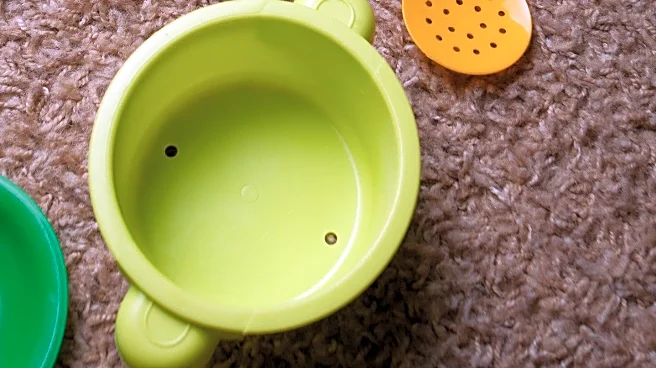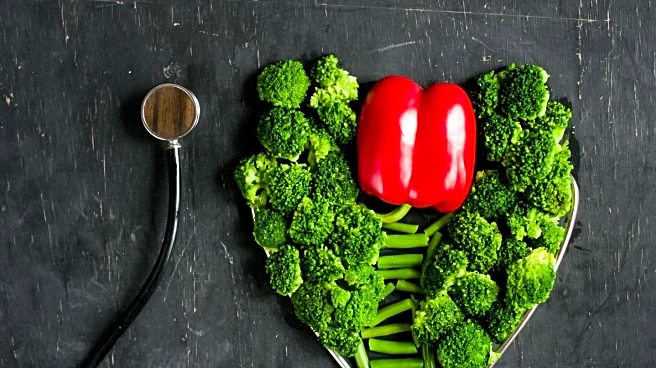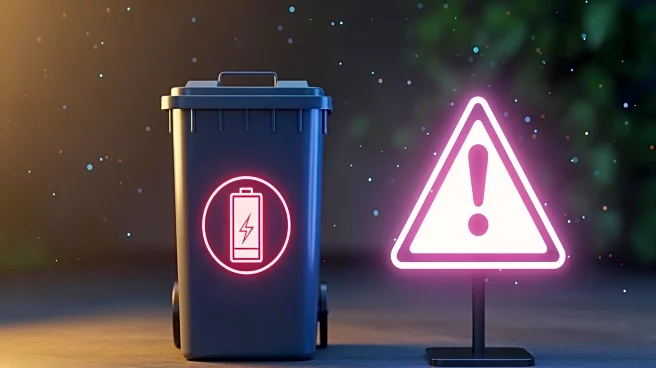What's Happening?
Recent studies have raised concerns about microplastics leaking from common kitchen tools into food, potentially impacting human health. Microplastics, which are tiny plastic particles, can accumulate
in human tissues and have been linked to various health issues, including heart attacks and strokes. Everyday kitchen items such as nonstick cookware, plastic food containers, and utensils are identified as sources of microplastic contamination. The study suggests that exposure to microplastics occurs through inhalation, ingestion, or contact, with significant amounts entering the body through food preparation and consumption.
Why It's Important?
The presence of microplastics in kitchen tools and their potential health impacts highlight a growing environmental and public health concern. As microplastics are pervasive in the environment, their infiltration into the food supply chain poses risks that are not yet fully understood. This issue prompts consumers to reconsider their kitchenware choices and opt for safer alternatives, such as stainless steel or glass, to minimize exposure. The findings also call for increased research into the long-term health effects of microplastics and the development of regulations to limit their presence in consumer products.
Beyond the Headlines
The issue of microplastics extends beyond individual health, reflecting broader environmental challenges. The widespread use of plastics contributes to pollution, affecting ecosystems and wildlife. As awareness grows, there may be a shift towards more sustainable practices and materials in manufacturing and consumer behavior. This could lead to innovations in product design and increased demand for eco-friendly alternatives. The conversation around microplastics also intersects with discussions on waste management and recycling, emphasizing the need for comprehensive strategies to address plastic pollution.











